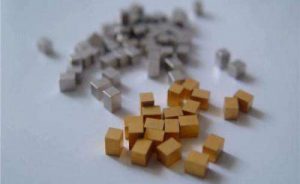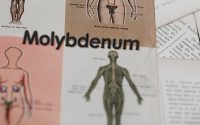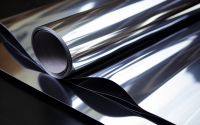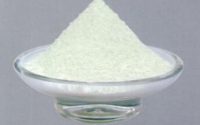What Are The Characteristics of Molybdenum-Copper Alloy?

Molybdenum-copper alloy is used to substitute copper and tungsten-copper in some applications. Usually, Mo/Cu alloy can be made by using high-quality molybdenum powder and oxygen-free copper powder by isostatic pressing method (high-temperature sintering-permeating copper). Since molybdenum-copper alloy is a pseudo-alloy that is pressed from two mutually incompatible metal powders, it has the characteristics of both molybdenum and copper, thereby obtaining good comprehensive performance. The alloy has fine structure, good arc breaking performance, good electrical conductivity, good thermal conductivity and small thermal expansion.
Good electrical and thermal conductivity
The refractory metal molybdenum is a metal element with good electrical conductivity and thermal conductivity in addition to gold, silver and copper. Therefore, the molybdenum-copper alloy inherits its advantages of high electrical conductivity and thermal conductivity.
Adjustable low thermal expansion coefficient
Molybdenum has a very low coefficient of thermal expansion while copper has a high coefficient of thermal expansion. The molybdenum-copper alloy can be combined into the required low expansion coefficient molybdenum-copper alloy according to different composition ratios, so that they can be combined with the thermal expansion coefficients of other materials to avoid thermal stress damage caused by excessive differences in thermal expansion coefficient.
Special high temperature performance
The melting point of copper is 1083 ° C, and the melting point of molybdenum is 3400 ° C. Thus, at normal temperature and medium temperature, the molybdenum-copper alloy has both good strength and certain plasticity. When the temperature exceeds the melting point of copper (>1083 ° C), the copper contained in the material can be liquefied and evaporated to absorb heat (cooling and cooling), so it can be used as a special high-temperature material, such as electricity contact under high temperature arc.
Non-magnetic
Both molybdenum and copper are non-ferromagnetic metals, so the alloys of the two metals are also non-magnetic, which ensures that the alloy can replace magnetic alloys such as iron in the magnetic fields.
Low gas content and good vacuum performance
Whether it is tungsten, molybdenum, or copper, the oxides are easily reduced, and their N2, H2, C and other impurities are easily removed, thereby maintaining a very low venting under vacuum and having good vacuum performance.
Good machinability
Pure molybdenum metal itself is difficult to machine due to its high hardness and brittleness, especially when it is processed into parts with complex shapes and fine shapes, which are inefficient and wasteful. The tungsten-copper and molybdenum-copper materials are advantageous for machining due to the reduced hardness and plasticity of the material after adding copper, and can be processed into any complicated shape by various processing means.
Refractory Molybdenum is a member of Stanford Advanced Materials and we supply people and companies with Molybdenum all over the world. For more information, please visit our official website www.samaterials.com.



